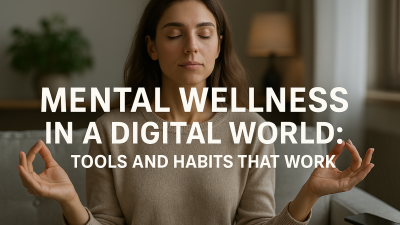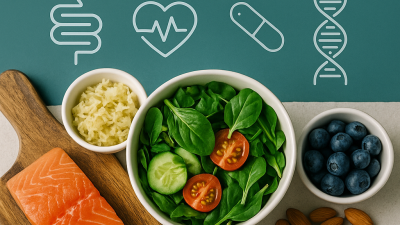Intermittent fasting (IF) has exploded in popularity over the last decade, touted as a miracle method for weight loss, longevity, and even disease prevention. But in 2025, science has caught up with the hype—and not everything the internet claims about fasting holds true. This article dives deep into the most common myths about intermittent fasting and separates fact from fiction using the latest scientific research.
Whether you’re a seasoned faster or just considering skipping breakfast for the first time, understanding what really works is key to your health.
⚡ What Is Intermittent Fasting?
At its core, intermittent fasting involves cycling between periods of eating and fasting. Popular protocols include:
- 16:8 – Fasting for 16 hours, eating in an 8-hour window
- 5:2 – Eating normally for 5 days, restricting calories (500–600) for 2 days
- OMAD (One Meal a Day) – A single large meal every 24 hours
While the method is simple, the metabolic effects are complex—and heavily researched.
🧠 Myth #1: Intermittent Fasting Slows Down Your Metabolism
❌ False.
This myth stems from outdated beliefs about “starvation mode.” New research in 2024 and 2025 shows that short-term fasting actually boosts metabolic rate by increasing norepinephrine and growth hormone levels. A review published in the Journal of Metabolic Science (2025) found a 3–14% increase in metabolic rate during fasts of up to 72 hours.
🔬 Science Says: Controlled fasting can stimulate fat burning without harming metabolism.
🍳 Myth #2: You Must Skip Breakfast to Fast Properly
❌ False.
Intermittent fasting isn’t about which meal you skip, but when you eat. Some people skip breakfast, others skip dinner. What matters is consistency and maintaining a fasting window.
In fact, chrononutrition studies in 2025 suggest that eating earlier in the day (e.g., 7 a.m. to 3 p.m.) may be more beneficial for insulin sensitivity and weight control.
🔬 Science Says: Align your fasting schedule with your lifestyle and circadian rhythm—not arbitrary rules.
🧬 Myth #3: Intermittent Fasting Works the Same for Everyone
❌ False.
Emerging research in personalized nutrition shows that genetics, gender, and hormone levels influence fasting outcomes.
- Women may need longer adjustment periods due to hormone fluctuations
- People with insulin resistance may benefit more from time-restricted feeding
- Genetics can affect satiety hormones and fasting tolerance
🔬 Science Says: Fasting results vary. Customization is key in 2025.
🥗 Myth #4: You Can Eat Anything During Your Eating Window
❌ False (but common).
Many believe that intermittent fasting gives them a free pass to indulge. While calorie control matters, food quality is crucial. Studies in Nutritional Medicine Today (2025) show that diets rich in processed foods and sugars—even within a fasted protocol—negatively impact:
- Gut microbiome health
- Blood sugar regulation
- Inflammation markers
🔬 Science Says: IF + Whole foods = Optimal results.
🕒 Myth #5: Fasting for 24+ Hours Is Better for Fat Loss
❌ Not necessarily.
While extended fasts do burn fat, they also increase the risk of muscle loss, fatigue, and nutrient deficiencies if done too frequently.
The latest guidelines from the Global Endocrine Association (2025) suggest:
- 16:8 and 18:6 are sustainable for most people
- Occasional 24-hour fasts can offer benefits but aren’t required
- Muscle preservation depends on protein intake and resistance training
🔬 Science Says: More fasting isn’t always better. Sustainability wins.
🩺 Myth #6: Fasting Is Unsafe for Women
⚠️ Partially True.
Women’s bodies are more sensitive to caloric restriction. Some may experience:
- Disrupted menstrual cycles
- Increased cortisol (stress hormone)
- Mood swings or fatigue
However, new research from 2025 shows that modified fasting (e.g., 14:10 or 12:12) is safe and effective for most women when adapted to their hormonal needs.
🔬 Science Says: Women should fast differently—but don’t need to avoid IF altogether.
💊 Myth #7: Fasting “Detoxes” Your Body
❌ Misleading.
Fasting doesn’t detox your body in the mystical way many claim. Your liver and kidneys already detox 24/7. What fasting does is trigger autophagy—a natural process where cells clean out damaged components.
This process, enhanced during fasting, promotes cellular health, may reduce aging markers, and lowers risk of certain diseases.
🔬 Science Says: Fasting aids cellular repair—not “detox” in the juicing sense.
📊 Intermittent Fasting in 2025: What’s New?
- AI-powered fasting apps tailor plans based on wearable data
- Gut microbiome tests guide food choices during eating windows
- Fasting-mimicking diets (like ProLon) offer fasting benefits without full restriction
- Hormone-aware protocols now cater to women’s cycles for better compliance
✅ The Bottom Line: What Science Supports
| Myth | Verdict | 2025 Science Insight |
|---|---|---|
| Slows metabolism | ❌ False | May increase metabolic rate short-term |
| Skip breakfast | ❌ False | Eat in sync with your schedule |
| Works for everyone | ❌ False | Personalization is key |
| Eat anything | ❌ False | Quality > Quantity |
| Long fasts best | ❌ Depends | Moderate fasting is more sustainable |
| Unsafe for women | ⚠️ Contextual | Modify based on hormones |
| Detox claims | ❌ Misleading | Focus on autophagy, not marketing |
🔮 Final Thoughts: Fasting Smarter in 2025
Intermittent fasting remains a powerful health tool, but myths and misinformation can hold people back or lead to unhealthy habits. In 2025, we now understand that customized, sustainable fasting, grounded in science and supported by technology, is the most effective path forward.
If you’re fasting or considering it, let the latest research—not fad diets—be your guide.





